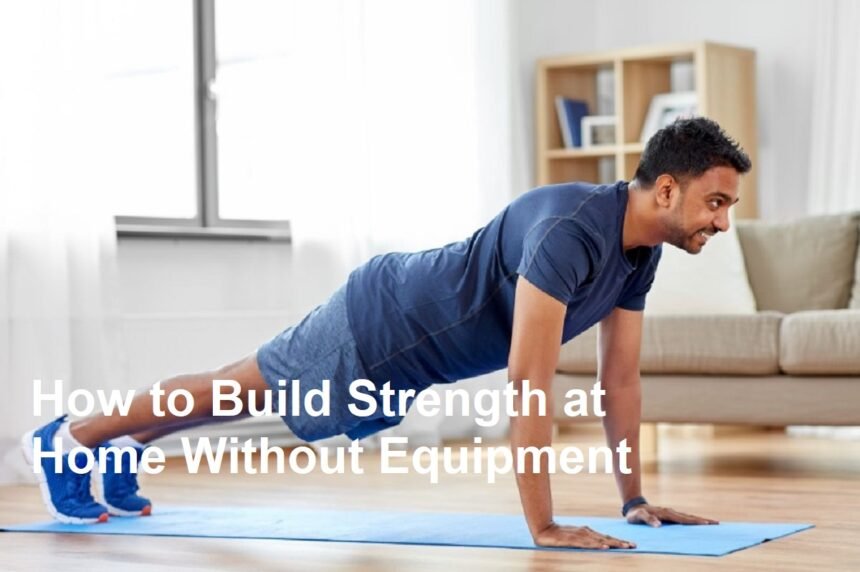Introduction
In today’s busy world, finding time and resources for regular workouts can be challenging. Many people seek effective ways to increase their strength without investing in gym equipment or requiring a gym membership. The good news is that developing body strength is entirely possible with no equipment, using just your body weight. This article will guide you through various exercises and tips that you can incorporate into your daily routine to boost strength effectively and safely.
Why Focus on Body-Weight Exercises?
Body-weight exercises are highly versatile and accessible. They help improve muscular strength, endurance, flexibility, and balance. Additionally, since they rely solely on your own weight, they are highly convenient, cost-effective, and can be performed almost anywhere—at home, in a park, or while traveling.
Key Principles for Effective Bodyweight Training
To maximize results, keep these principles in mind:
- Progressive Overload: Gradually increase the difficulty by adding repetitions, sets, or advanced variations.
- Consistency: Regular workouts (at least 3-4 times per week) are vital for strength gains.
- Proper Technique: Focus on correct form to prevent injuries and target the right muscles.
- Rest and Recovery: Allow adequate recovery time for muscle repair and growth.
Top Body-Weight Exercises to Increase Strength
1. Push-Ups
A classic move that targets the chest, shoulders, triceps, and core.
- How to do it: Start in a plank position with hands shoulder-width apart. Lower your body until your chest nearly touches the ground. Push through your palms to straighten your arms back to the starting position.
- Variations: Incline push-ups, decline push-ups, diamond push-ups, or plyometric push-ups to increase difficulty.
2. Squats
Excellent for strengthening the thighs, hips, glutes, and core.
- How to do it: Stand with feet shoulder-width apart. Keep your chest up and back flat. Bend your knees and hips, lowering your body as if sitting back into a chair. Go as low as comfortable, then push through your heels to return to standing.
- Variations: Jump squats, pistol squats, or sumo squats for added challenge.
3. Lunges
Target the legs, glutes, and improve balance.
- How to do it: Step forward with one leg, lowering your hips until both knees are at approximately 90 degrees. Push off the front foot to return to the starting position, then alternate legs.
- Variations: Walking lunges, reverse lunges, or jumping lunges.
4. Planks
Great for strengthening the core, shoulders, and back muscles.
- How to do it: Get into a forearm plank position, keeping your body in a straight line from head to heels. Engage your core and hold for as long as possible.
- Variations: Side planks, plank with leg lifts, or mountain climbers.
5. Dips (Using a Chair)
Focuses on the triceps, shoulders, and chest.
- How to do it: Sit on the edge of a sturdy chair or bench. Place your hands next to your hips for support. Move your body forward off the chair and lower yourself by bending your elbows. Push back up to the starting position.
Developing a Routine
To build strength effectively:
- Warm-Up: Do 5-10 minutes of light cardio (jogging in place, jumping jacks).
- Workout Structure: Perform 2-3 sets of 8-15 repetitions for each exercise, depending on your fitness level.
- Rest Between Sets: Take 30-60 seconds for recovery.
- Cool Down: Stretch to improve flexibility and reduce soreness.
Tips for Success
- Stay Hydrated: Drink water before, during, and after workouts.
- Monitor Progress: Keep track of reps and sets, and gradually increase intensity.
- Mix It Up: Incorporate different exercises to target various muscle groups and prevent boredom.
- Listen to Your Body: Avoid overstretching or pushing through pain. Rest if needed.
Additional Benefits of Body-Weight Training
Apart from increasing strength, these exercises improve flexibility, balance, and coordination. They also enhance muscular endurance and metabolic health. Over time, this kind of training can help with posture, joint stability, and overall functional fitness.
Conclusion
Building body strength without equipment is accessible, practical, and highly effective.












